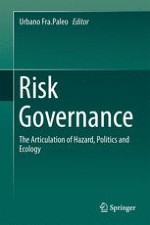2015 | OriginalPaper | Chapter
7. Interest, Interest, Whose Interest Is at Risk? Risk Governance, Issues Management, and the Fully Functioning Society
Authors : Robert L. Heath, Katherine McComas
Published in: Risk Governance
Publisher: Springer Netherlands
Activate our intelligent search to find suitable subject content or patents.
Select sections of text to find matching patents with Artificial Intelligence. powered by
Select sections of text to find additional relevant content using AI-assisted search. powered by
